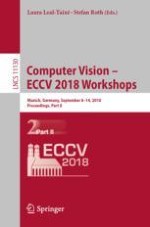2019 | OriginalPaper | Buchkapitel
Are You Tampering with My Data?
verfasst von : Michele Alberti, Vinaychandran Pondenkandath, Marcel Würsch, Manuel Bouillon, Mathias Seuret, Rolf Ingold, Marcus Liwicki
Erschienen in: Computer Vision – ECCV 2018 Workshops
Aktivieren Sie unsere intelligente Suche, um passende Fachinhalte oder Patente zu finden.
Wählen Sie Textabschnitte aus um mit Künstlicher Intelligenz passenden Patente zu finden. powered by
Markieren Sie Textabschnitte, um KI-gestützt weitere passende Inhalte zu finden. powered by
